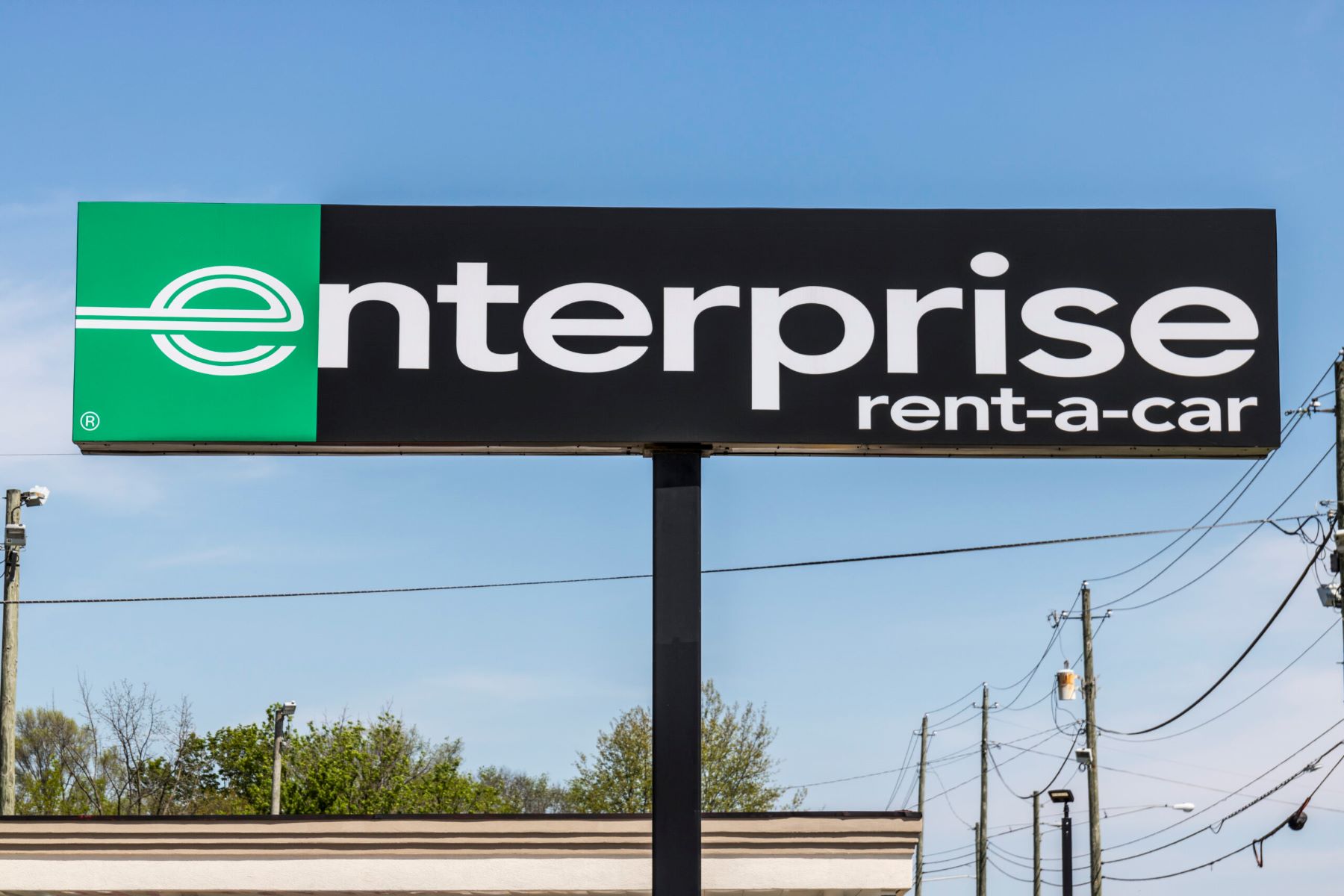

Finance
How Much Is Enterprise Insurance Per Day?
Published: November 17, 2023
Looking for enterprise insurance? Find out how much it costs per day and manage your finances effectively with our comprehensive coverage options.
(Many of the links in this article redirect to a specific reviewed product. Your purchase of these products through affiliate links helps to generate commission for LiveWell, at no extra cost. Learn more)
Table of Contents
Introduction
Welcome to the world of enterprise insurance! Whether you’re a small business owner or an ambitious entrepreneur, protecting your assets and mitigating risks is crucial. Business ventures are inherently exposed to various uncertainties, such as accidents, lawsuits, and natural disasters. To safeguard your enterprise, having the right insurance coverage is paramount.
In this article, we will delve into the realm of enterprise insurance and address one common question that often arises: How much does enterprise insurance cost per day? Understanding the factors that influence insurance rates and how to find affordable coverage will empower you to make informed decisions and protect your enterprise effectively.
It’s important to note that enterprise insurance rates can vary significantly depending on several factors. These factors include the type and size of your business, the industry you operate in, the location of your business, and the specific coverage options you choose.
Insurance companies assess these factors to determine the level of risk associated with providing coverage for your enterprise. Businesses that operate in high-risk industries or have a history of claims may have higher insurance premiums. On the other hand, businesses with comprehensive risk management strategies and a favorable claims history may enjoy lower insurance costs.
As a business owner, it is beneficial to understand these influencing factors to effectively manage your insurance expenses. By evaluating your unique business characteristics, you can make informed decisions to mitigate risks and find the right balance between coverage and cost.
In the following sections, we will explore the various factors that affect enterprise insurance rates, provide insights into average costs, discuss how to compare daily insurance rates, and offer tips for finding affordable coverage. So, let’s dive in and unravel the complexities of enterprise insurance!
Factors Affecting Enterprise Insurance Rates
When determining the cost of enterprise insurance, insurance providers consider several key factors that can influence the premium rates. Understanding these factors will help you assess your insurance needs and budget accordingly. Let’s take a closer look at the key factors that affect enterprise insurance rates:
- Industry and Risk Profile: The industry you operate in plays a significant role in determining insurance rates. Some industries, such as construction or healthcare, have higher inherent risks, leading to higher insurance premiums. Insurance providers assess the risk profile of your industry and adjust rates accordingly.
- Business Size and Revenue: The size of your enterprise, including factors like annual revenue and number of employees, can impact insurance rates. Larger businesses often have higher coverage needs and may pay more in premiums compared to smaller businesses.
- Location: The location of your business can influence insurance rates due to factors like crime rates, environmental risks, and building codes. Businesses in urban areas with higher crime rates or prone to natural disasters may have higher insurance premiums.
- Claim History: Insurance providers examine your past claim history to assess the level of risk associated with covering your enterprise. Businesses with a history of frequent claims or high-cost claims may face higher premiums as they are seen as higher risk.
- Coverage Options: The specific coverage options you choose for your enterprise insurance policy will determine the premium rates. Additional coverage, such as umbrella liability coverage or business interruption insurance, will increase the cost of your insurance.
- Deductibles and Policy Limits: The amount of deductible you choose and the policy limits you set can impact premiums. Higher deductibles may lower the premium cost but also increase your out-of-pocket expenses in case of a claim.
- Risk Management Practices: Implementing effective risk management practices within your enterprise can positively influence insurance rates. Insurance providers may offer discounts or favorable rates to businesses with robust safety protocols, employee training programs, and risk mitigation strategies.
Keep in mind that each insurance provider may weigh these factors differently when determining your rates. It’s advisable to consult with multiple insurers, compare quotes, and consider the specific needs and risk profile of your enterprise before making a decision.
Now that we’ve explored the key factors influencing enterprise insurance rates, let’s move on to understanding the average cost of enterprise insurance and how to compare daily insurance rates.
Average Cost of Enterprise Insurance
The cost of enterprise insurance can vary widely depending on factors such as the size and type of business, location, industry, and coverage options. To provide a general idea, we’ll discuss the average cost of enterprise insurance.
On average, businesses can expect to pay between $750 to $2,000 per year for a basic enterprise insurance policy. However, it’s important to note that this is just a rough estimate and actual costs can vary significantly. Smaller businesses with lower revenue and fewer employees may pay towards the lower end of this range, while larger businesses with higher risk profiles may pay higher premiums.
For a more accurate estimate, it’s recommended to obtain quotes from multiple insurance providers that specialize in enterprise insurance. This allows you to compare rates and coverage options specific to your business needs.
The specific industry your business operates in can also have a significant impact on insurance costs. For example, businesses in high-risk industries such as construction or healthcare may have higher insurance premiums due to the increased likelihood of accidents or lawsuits.
Additionally, the coverage options you choose will affect the cost of your enterprise insurance policy. Common coverage options include general liability insurance, professional liability insurance, property insurance, and workers’ compensation insurance. The more comprehensive your coverage, the higher the premium is likely to be.
Remember, these costs are typically calculated on an annual basis, but it’s also possible to estimate the daily cost of enterprise insurance by dividing the annual premium by 365. Keep in mind that this is only an approximation and actual daily rates may vary.
Now that we have a general understanding of the average cost of enterprise insurance, let’s explore how to compare daily insurance rates to find the best coverage for your business.
Comparing Daily Enterprise Insurance Rates
When searching for enterprise insurance, it’s essential to compare daily insurance rates to ensure you get the best coverage at a competitive price. Here are some key steps to take when comparing daily enterprise insurance rates:
- Identify Your Coverage Needs: Before comparing rates, assess the specific insurance coverage you need for your business. Analyze the risks associated with your industry, consider any legal requirements, and determine the coverage limits you require. This will help you make accurate comparisons and avoid overpaying for unnecessary coverage.
- Obtain Multiple Quotes: Reach out to several insurance providers to request quotes for your enterprise insurance. Be sure to provide detailed information about your business, including its size, industry, location, and any specific requirements. Gathering multiple quotes will give you a clear picture of the price range and allow you to identify any outliers.
- Review Coverage Options: Carefully examine the coverage options included in each quote. Compare the types of coverage offered, policy limits, deductibles, and any additional endorsements or riders that may impact the premium. It’s crucial to ensure that the quotes provide comparable levels of coverage so that you can make an accurate cost comparison.
- Evaluate Policy Exclusions: Pay attention to any exclusions or limitations mentioned in the insurance policies. Exclusions may restrict coverage for certain events or circumstances. It’s important to understand what is not covered by a policy, as it may affect your decision-making process.
- Consider Financial Stability: Research the financial stability and reputation of the insurance providers you’re considering. Check their ratings from independent rating agencies, read customer reviews, and gather information about their claims process. Working with a financially stable and reputable insurer can provide added peace of mind in the event of a claim.
- Factor in Customer Service: Insurance claims can be complex, so consider the level of customer service provided by each insurance provider. Read reviews, check their customer support options, and ask for recommendations from other business owners. A responsive and supportive insurer can make a significant difference in your insurance experience.
- Weigh Price and Coverage: While cost is an important factor, it shouldn’t be the sole determinant of your decision. Carefully evaluate the coverage options, policy terms, and pricing structures of each quote. Look for a balance between affordability and comprehensive coverage to ensure that you’re adequately protected.
By following these steps and conducting thorough comparisons, you can identify the daily enterprise insurance rates that best meet your coverage needs and budget. Remember, finding the right insurance coverage is an investment in the future of your business, so take the time to make an informed decision.
Next, we’ll explore additional coverage options and costs that you may consider to further protect your enterprise.
Additional Coverage Options and Costs
In addition to standard enterprise insurance coverage, there are various additional options available to further protect your business from specific risks or liabilities. These optional coverages can be customized based on the unique needs of your enterprise. Let’s explore some of the common additional coverage options and associated costs:
- Umbrella Liability Insurance: Umbrella liability insurance provides additional liability coverage beyond the limits of your general liability policy. This coverage is particularly valuable for businesses that deal with high-risk activities or face the potential for costly lawsuits. The cost of umbrella liability insurance will depend on factors such as your industry, claims history, and coverage limits.
- Business Interruption Insurance: Business interruption insurance reimburses you for lost income and extra expenses if your business is temporarily unable to operate due to a covered event, such as a natural disaster or fire. The cost of business interruption insurance varies based on factors like your industry, revenue, and the coverage limits you choose.
- Cyber Liability Insurance: With the increasing threat of cyberattacks and data breaches, cyber liability insurance has become essential for businesses that handle sensitive customer information. This coverage helps protect against financial losses, legal expenses, and reputational damage resulting from a cybersecurity incident. The cost of cyber liability insurance depends on factors such as your industry, the amount of data you handle, and your security measures.
- Professional Liability Insurance: Professional liability insurance, also known as errors and omissions insurance, covers the costs associated with claims of professional negligence or mistakes. This coverage is crucial for professionals offering specialized services or advice. The cost of professional liability insurance varies based on factors such as your industry, claims history, coverage limits, and the level of risk associated with your profession.
- Commercial Auto Insurance: If your business owns or operates vehicles for business purposes, commercial auto insurance is a necessity. This coverage protects against property damage and liability resulting from accidents involving company vehicles. The cost of commercial auto insurance is determined by factors such as vehicle type, usage, number of drivers, driving history, and coverage limits.
It’s important to note that the costs of these additional coverage options will vary based on factors specific to your business. Insurance providers take into account variables such as industry risk, claims history, coverage limits, and the size of your enterprise when determining the premiums for these coverages.
When considering additional coverage options, it’s essential to evaluate the potential risks your business faces and weigh the cost against the potential benefits. Balancing the need for comprehensive coverage with your budget is key to finding the right level of protection for your enterprise.
Now that we’ve explored additional coverage options and associated costs, let’s move on to some tips for finding affordable enterprise insurance.
Tips for Finding Affordable Enterprise Insurance
When it comes to finding affordable enterprise insurance, there are several strategies you can employ to optimize your coverage and minimize costs. Here are some tips to help you secure cost-effective insurance for your business:
- Shop Around and Compare Quotes: Obtain quotes from multiple insurance providers to compare coverage options and rates. Each insurer may have different underwriting criteria and pricing structures, so shopping around allows you to find the best deal.
- Bundle Policies: Consider bundling multiple insurance policies with the same provider. Many insurers offer discounts for bundling, which can lead to significant cost savings. Bundling your policies also simplifies administrative tasks and helps streamline your coverage.
- Assess Your Coverage Needs: Review your current insurance coverage regularly to ensure you are not overpaying for unnecessary coverage. Eliminate any duplicate or outdated policies and tailor your coverage to accurately reflect the risks your business faces.
- Implement Risk Management Practices: Insurers appreciate businesses that prioritize risk management. Implement safety protocols, conduct regular employee training, and maintain proper documentation of risk mitigation strategies. This can help lower your premiums by demonstrating your commitment to minimizing risks.
- Consider Higher Deductibles: Increasing your deductible—the amount you are responsible for paying out of pocket in the event of a claim—can lower your insurance premiums. However, make sure you have sufficient funds set aside to cover any potential deductible expenses.
- Improve Business Security Measures: Taking steps to enhance the security of your business premises can result in lower insurance costs. Install security systems, alarms, and surveillance cameras to deter potential risks and demonstrate your commitment to safeguarding your assets.
- Review and Update Policies Annually: As your business evolves, so do your insurance needs. Review your policies annually to ensure you have appropriate coverage. Update your insurer about any changes in your business operations, locations, or number of employees to avoid any coverage gaps or unnecessary expenses.
- Consider Working with an Insurance Broker: Insurance brokers have access to multiple insurers and can help you find the best coverage options at competitive rates. They understand the complexities of insurance and can assist in determining the most cost-effective solutions tailored to your business.
By applying these tips, you can improve the affordability of your enterprise insurance without compromising on coverage. Remember, finding the right balance between cost and protection is essential in safeguarding the financial health of your business.
Now that we’ve explored tips for finding affordable enterprise insurance, let’s conclude our discussion.
Conclusion
Enterprise insurance is a vital aspect of protecting your business from financial risks and liabilities. Understanding the factors that influence insurance rates, the average cost of coverage, and how to compare daily insurance rates are essential to making informed decisions for your enterprise.
Factors such as industry risk, business size, location, and claim history can significantly impact the cost of enterprise insurance. By evaluating these factors and customizing your coverage based on your business needs, you can ensure adequate protection while managing costs.
On average, businesses can expect to pay between $750 to $2,000 per year for basic enterprise insurance coverage. However, it’s essential to obtain quotes from multiple insurers tailored to your specific needs to get a more accurate estimate of costs.
When comparing daily enterprise insurance rates, it’s crucial to consider coverage options, policy limits, exclusions, and the financial stability of insurers. Striking a balance between price and coverage is key to finding the right insurance solution for your business.
In addition to basic coverage, there are several optional coverage options available to further protect your business from specific risks. Umbrella liability insurance, business interruption insurance, cyber liability insurance, professional liability insurance, and commercial auto insurance are examples of additional coverage options to consider.
To find affordable enterprise insurance, shop around, compare quotes, bundle policies, implement risk management practices, consider higher deductibles, and regularly review and update your coverage. Working with an insurance broker can also be beneficial in navigating the complexities of insurance and finding cost-effective solutions.
Remember, enterprise insurance is an investment in the future of your business. By understanding your coverage needs, evaluating costs, and implementing risk management strategies, you can protect your enterprise from unforeseen events and secure its long-term success.
Now armed with the knowledge and strategies outlined in this article, you can confidently navigate the world of enterprise insurance and make informed decisions to safeguard your business.














